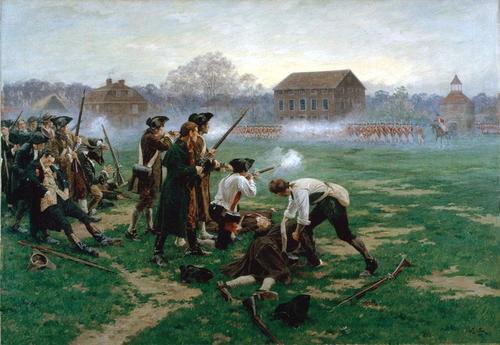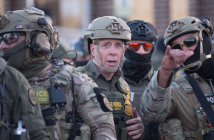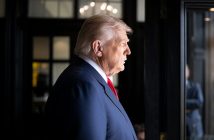The media has given highly favorable coverage to a new book by Dr. Carol Anderson, chair of Emory University’s Black Studies Department, that argues that “[the Second Amendment]was designed and has consistently been constructed to keep African Americans powerless and vulnerable.”
In interviews with media outlets like CNN and NPR Anderson’s theory is not challenged on the history and purpose of the Second Amendment.
Like the contested claims of the “1619” project (which posited that slavery was the motivation for the establishment of the colonies), there might be a reluctance by academics to raise the countervailing historical sources out of fear of being labeled insensitive, defensive, or even racist.

However, this is not a new theory and, while there were concerns at the time about slavery and uprisings, the roots of the Second Amendment can be traced largely to England and the fears of government oppression. The point is not to dismiss this consideration for some pro-slavery figures at the time but to put those statements in a more historically grounded and accurate context.
The book, “The Second: Race and Guns in a Fatally Unequal America,” is the latest work of Anderson who previously published “White Rage: The Unspoken Truth of Our Racial Divide.” NPR bills its interview as “Historian Carol Anderson Uncovers The Racist Roots Of The Second Amendment.”
In truth, this is not a new theory and was long preceded by more detailed accounts by figures like Carl Bogus who wrote the 1998 work The Hidden History of the Second Amendment. Carl T. Bogus, The Hidden History of the Second Amendment, 31 U.C. DAVIS L. REV. 309 (1998); see also Carl T. Bogus, Race, Riots, and Guns, 66 S. CAL. L. REV. 1365 (1993). These works are worth reading as are the writings of my colleague Robert Cottrol (and my former colleague) Ray Diamond. See Robert J. Cottrol & Raymond T. Diamond, The Second Amendment: Toward an Afro-Americanist Reconsideration, 80 GEO. L.J. 309 (1991).
Bogus highlighted the quotes used later by Anderson, including a warning by Patrick Henry that the Constitution gave too much power to the federal government in the “common defense” and did not leave enough powers with the states to defend themselves. Bogus asked “What was Henry driving at? In 1788, Americans did not fear foreign invasion. Nor did Americans still harbor the illusion that the militia could effectively contest trained military forces.” His answer was slavery and its preservation.
Slavery was a matter discussed both at the Declaration of Independence and during the Constitutional debates. There were those who were concerned about efforts to abolish slavery as well as slave uprisings. However, the Second Amendment does not appear the result in whole or in large part due to those fears. The right to bear arms was viewed as a bulwark against oppression of citizens by the government. In Northern states where slavery was not as popular, the Second Amendment was an important guarantee against that danger of tyranny. For example, the Pennsylvania Constitution (that preceded the Constitution) included these provisions:
That the people have a right to bear arms for the defense of themselves and their own state, or the United States, or for the purpose of killing game; and no law shall be passed for disarming the people or any of them, unless for crimes committed, or real danger of public injury from individuals; and as standing armies in the time of peace are dangerous to liberty, they ought not to be kept up; and that the military shall be kept under strict subordination to and be governed by the civil power.
The inhabitants of the several states shall have liberty to fowl and hunt in seasonable times, on the lands they hold, and on all other lands in the United States not enclosed, and in like manner to fish in all navigable waters, and others not private property, without being restrained therein by any laws to be passed by the legislature of the United States.
New Hampshire, New York, Rhode Island and other states had similar precursors to the Second Amendment. The Framers had just overthrown a tyrant and the image of the militia and the famed “Minutemen” remained fixed in the minds of many at the time.
Continue Reading: zerohedge.com




Leave a Reply